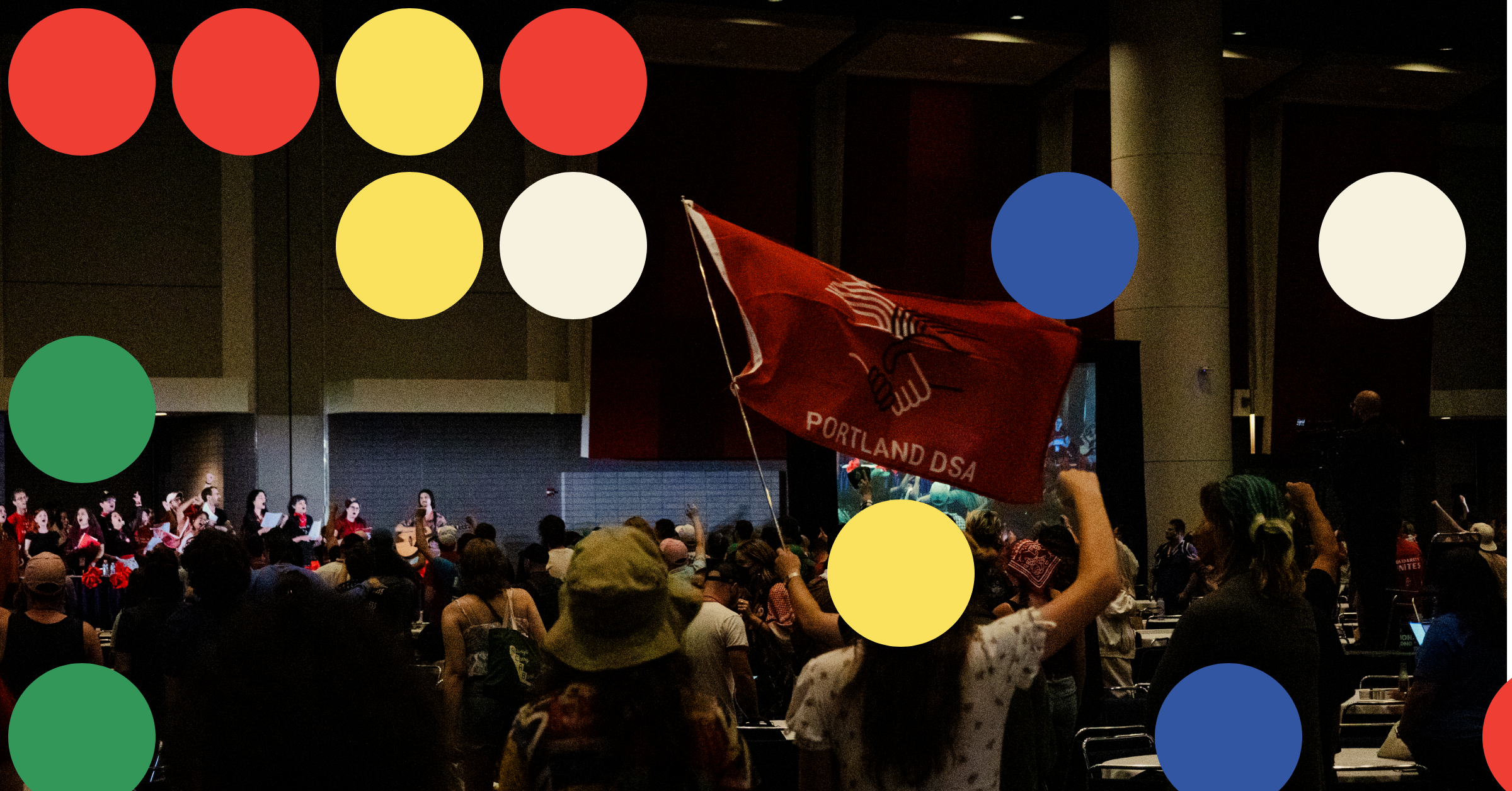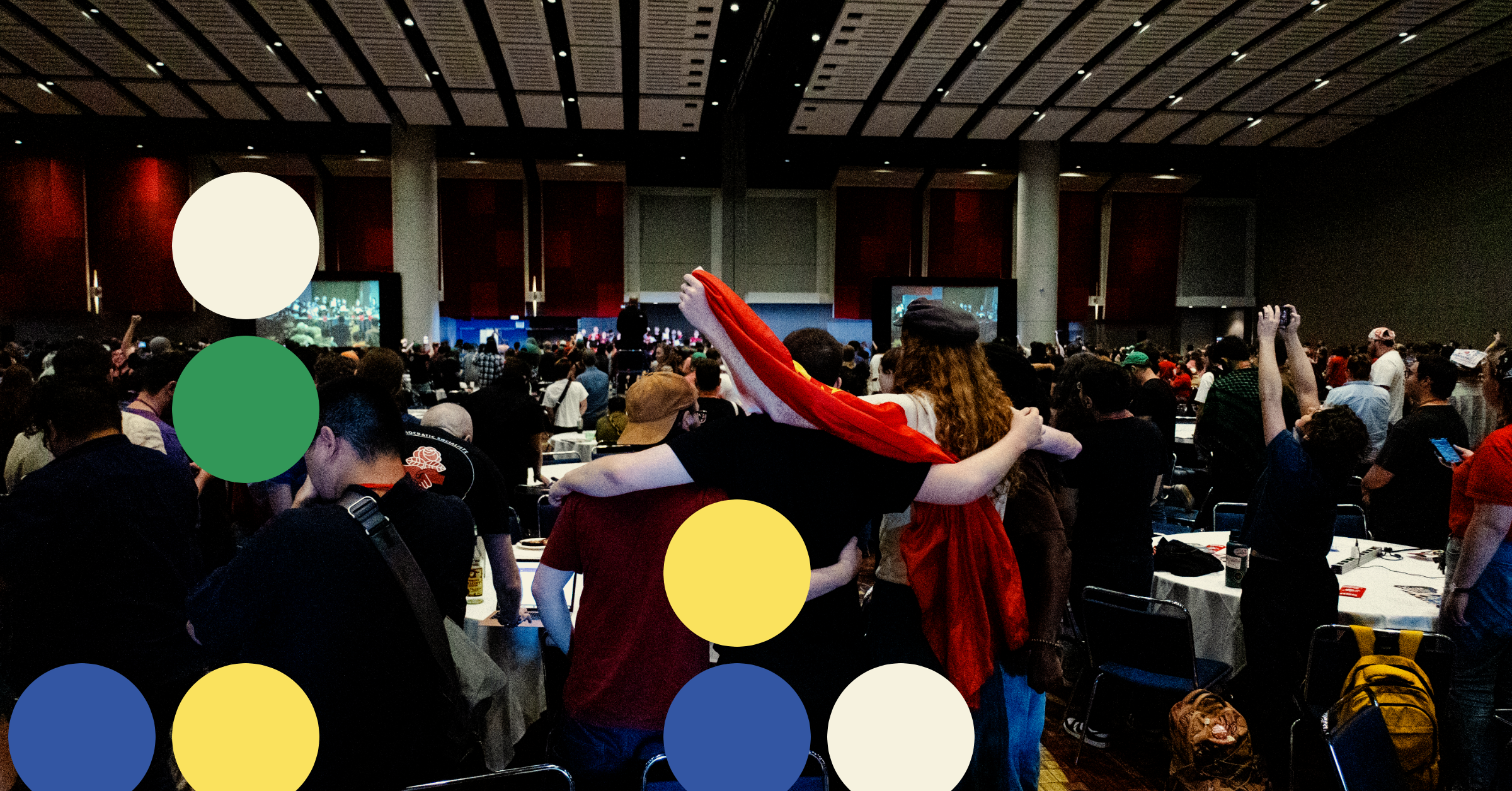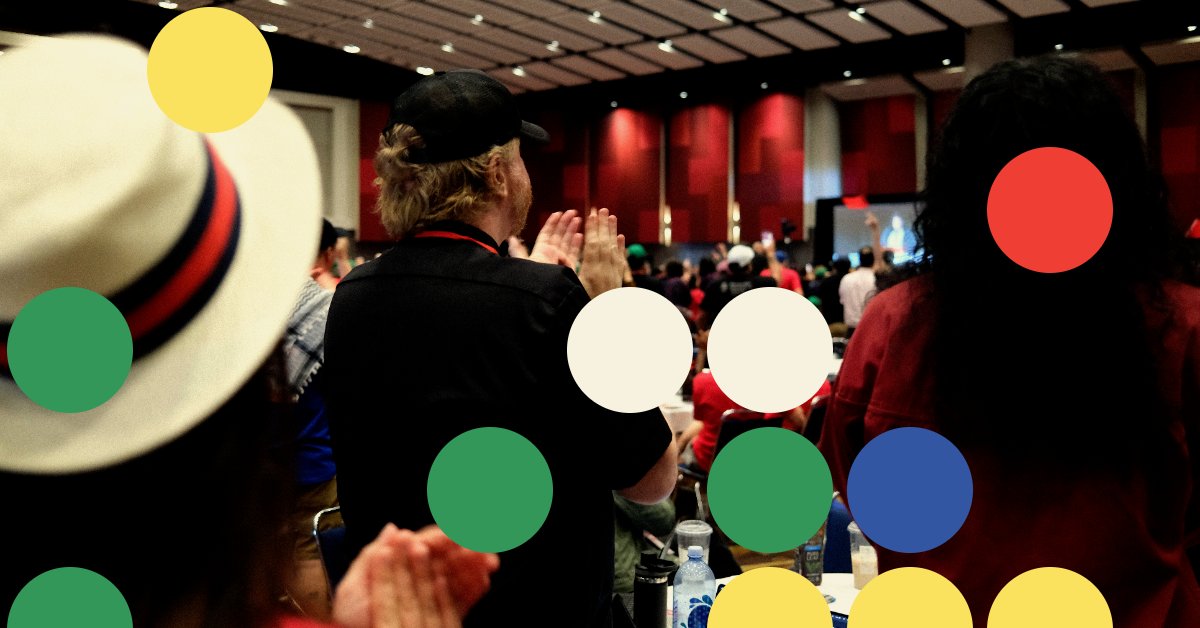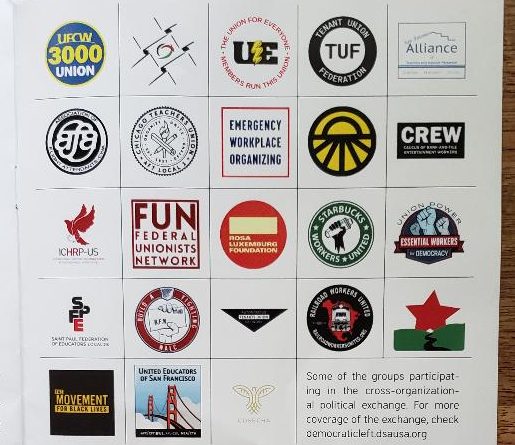DSA’s 2025 National Convention marked ten years since the rebirth of the organization, and along with it, the American socialist movement. After a decade of heated debate about the fundamental pillars of DSA’s strategy, this year’s Convention was remarkable in that it barely addressed many of the topics that have historically divided the organization.
No one argued against pursuing the democratic road to socialism. No one argued against the importance of electoral politics. No one argued against the previously-adopted dirty break strategy. And no one argued against our tactical flexibility running candidates on the Democratic Party ballot line.
In some ways, all this felt like major progress. One can now make the case that there is a broad consensus within DSA that we must commit ourselves to mass democratic politics, to class-struggle elections, and to tactical flexibility on ballot-line questions, while we work to build a working-class party of our own.
But underneath this apparent unity in principle lurked a stark division in practice between those more concerned with discipline within DSA as it currently exists vs. those more concerned with growing DSA and the broader left/labor movement far beyond their current standing.
If we are to honestly revisit our commitments to some of these unifying strategic tenants, particularly the democratic road to socialism and the dirty break strategy, then it should be clear that growth should take precedence over discipline.
The Democratic Road to Socialism
DSA members understand that we are not going to bring about socialism through an armed uprising led by an ideologically sophisticated vanguard. Our only realistic path is by building a mass movement of the working class that can exercise decisive political and economic power.
Politically, our ultimate aim is to make socialist politics capable of winning durable electoral majorities in the United States so that socialists in office can wield the power of the state to implement a socialist program (socializing basic needs like healthcare and education, nationalizing major economic sectors like finance and energy, democratizing private firms, revitalizing political democracy, ending imperialist interventions, etc).
Economically, this means rebuilding a massive, fighting labor movement capable of halting economic production as a means of both achieving and defending social democratic reforms and an ultimate transition to socialism. We know that the capitalist class will use their control over private investment to cripple the economy and undermine any newly-elected socialist government. It is only by cohering the vast majority of working people into an organized, self-conscious working class that is capable of striking to defend their collective interest that we can hope to overcome this inevitable roadblock to a socialist future.
It should then be clear that whether we are considering the political or economic dimensions of the democratic road to socialism, we need to think big. We will need to build power in the tens of millions, not the tens of thousands, in order to succeed.
The Dirty Break Strategy
What to do about the Democratic Party has arguably been the single most animating question within DSA over the last decade. And most members are unsatisfied with the two answers that have historically been on offer: A clean break or realignment.
A clean break strategy of immediately striking out on our own ballot line has been largely discredited as dooming us to electoral irrelevance. A strategy of realigning the Democratic Party has been similarly rejected by most as unrealistic given the party’s dependence on capitalist donors and its voluntary decades-long drift to the right.
This has led DSA to embrace the dirty break strategy, calling for us to run socialist/labor candidates in Democratic primaries (or as independents where we can) but to use their campaigns to build an independent party-like organization capable of eventually becoming strong enough to break from the Democratic Party with its own ballot line, without being a spoiler or succumbing to difficult ballot eligibility requirements.
If we take this idea of one day breaking out on our ballot line—without acting as a spoiler in our first-past-the-post, winner-take-all electoral system—seriously, then that means winning substantial electoral pluralities, if not outright majorities, in states, districts, and cities all across the country, totaling—again—in the tens of millions.
The Disconnect
At the time of this writing in the fall of 2025, DSA is an organization of 80,000 members. Our explosive twenty-fold growth over the last decade has led to the rebirth of socialist politics in the United States. But we are still oceans away from where we need to be in order to follow the democratic road to socialism or have a chance at a dirty break.
In other words, there is a fundamental disconnect between the power we currently have and the power we need to build in order to fulfill our own basic strategic tenets for one day achieving socialism. But this disconnect was not the focus of the 2025 National Convention. Rather than prioritize conversations about how to grow DSA and the broader left/labor movement to build the power we need to challenge capitalism, delegates spent far more time considering resolutions and amendments concerned with how to increase discipline on existing DSA candidates and members.
R01, R01-A01, R20-A01, and R22 all sought to impose greater restrictions on what kinds of candidates DSA can endorse and what those candidates can do or say once in office. R22 went beyond this and imposed additional restrictions on what DSA members can do or say if they want to avoid the risk of being expelled from the organization. CR10-A01 would have required our labor work to always take an explicitly socialist character, rather than one focused on building rank-and-file militancy and democracy.
Discipline and accountability for DSA candidates is, of course, important. We all want more cadre candidates who have deeper ties to DSA, its politics, its chapters, and its members. And we all want more robust Socialists in Office (SIO) programs, like the one established in CR05, which describes a network “dedicated to supporting, organizing, and collaborating with DSA members who hold elected government office towards the goal of promoting Democratic Socialism.” But the aforementioned resolutions and amendments were not interested in accountability through support and collaboration, but rather discipline through exclusion and expulsion.
Focusing on this kind of hard-line discipline comes at the expense of growing DSA into the mass party-like organization we want it to be to achieve the dirty break and democratic road to socialism. Requiring our labor candidates to also be explicit socialists (R20-A01), requiring our endorsed candidates and DSA members to take highly-detailed anti-Zionist positions or face the threat of expulsion (R01, R22), and requiring our rank-and-file labor comrades to lead with alienating and abstract political positions instead of focusing on fighting the boss (CR10-A01), are all ways of limiting who can join or come into contact with DSA, who can learn about class politics, and who can experience class struggle first-hand.
Imposing more red lines on our candidates will result in fewer DSA members running for office and therefore fewer working-class people getting exposed to class-struggle politics and fewer joining DSA. Mandating DSA rank-and-file labor militants to foreground socialist agitation rather than focusing on concrete economic grievances would undermine their ability to earn the respect of their coworkers and build majority support for forming a union or going on strike.
For those who might argue that more discipline would lead to more growth, evidence of that theory is sorely lacking. The national political events that have most significantly and directly led to the rebirth of DSA and the socialist left have been either high-profile democratic socialist candidates—Bernie Sanders, Alexandria Ocasio-Cortez, and Zohran Mamdani—running for office, or Donald Trump winning the presidency. In both cases, new recruits were brought into DSA and new people introduced to socialism not because they were exposed to a highly detailed or ultra-radical platform, nor a highly disciplined or hard-lined organization, but because they saw democratic socialism and DSA as credible vehicles for advancing class struggle, pursuing broadly popular economic demands, and resisting a deeply destructive resurgent right.
Prioritizing discipline over growth also fundamentally misunderstands what would give DSA the ability to impose discipline on candidates in the first place: Power. The larger and more powerful DSA becomes, the more we will be able to create a political environment in which our endorsed candidates feel that our power is enough for them to reject the intense conservatizing pressures of holding office in a capitalist state, controlled by two capitalist parties, dominated by wealthy donors, corporate lobbyists, career consultants, and establishment politicians. But as long as we remain a relatively minor player in US politics, the democratic socialist politicians who rise to national prominence will quickly find themselves in a position where they can accurately conclude that we need them much more than they need us. In other words, we can only achieve meaningful discipline if we grow.
In all fairness, a number of Convention resolutions did pass that are more focused on building the power of DSA and the broader left/labor movement (e.g., CR10, R05, R18, R33, R34). But more important than any granular analysis of the individual resolutions and amendments considered at Convention is the overall trend of delegates spending far more time thinking about and debating how we make can make DSA—as it exists right now—into a more disciplined party-like organization, rather than how to grow DSA into the party-like organization (or a core member of a broader party-like formation) we need in order to seriously contest for power.
Unanswered Questions
At the end of the day, the 2025 National Convention’s emphasis on party-building in the here-and-now and its abandonment of ballot-line debates may have been more confusing than clarifying. What does it mean to build an independent working-class party out of an 80,000 member socialist organization? Do we honestly think that DSA can continue more or less on its current trajectory and evolve into a party-like organization with tens of millions of members, strong enough to break off on its own ballot line, win majorities in general elections, and shut down the national economy to defend its socialist program from capitalist backlash? Or do we think DSA will be the socialist flank of a broader left/labor party formation?
These critical questions were more or less glossed over at the Convention. But if we are committed to one day bringing about a socialist future, then they must be central to our analysis and debate. However we answer them, one thing is clear: DSA must be focused on building power, which means dramatically expanding its ranks. If this is not our conclusion, then there is a fundamental contradiction between our commitment to political independence and our commitment to wielding power.




